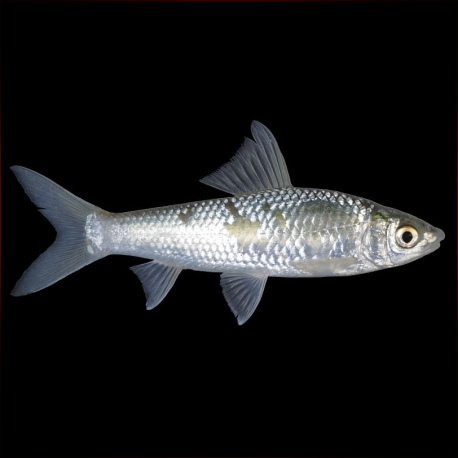More info
Datasheet
| Maximum Size | 15.0cm / 5.91inches |
General Description
Gymnostomus lobatus, commonly known as the G. lobatus, is a cyprinid fish species that can be identified by its possession of 32-33 lateral line scales, a relatively slender body with a depth fitting 3.7-4.0 times in standard length, and a plain silver coloration without dark markings on the caudal peduncle. It is a member of the tribe Labeonini within the subfamily Cyprininae and is part of the Labeoina subtribe alongside other genera like Labeo and Bangana.
Aquarium Setup
Aquarium setup for G. lobatus should include a tank size of at least 20 gallons, fine substrate, ample swimming space, and areas for hiding including rocks and driftwood. Water parameters should be maintained within a temperature range of 75-82°F (24-28°C), a pH range of 6.5-7.5, and soft to moderately hard water. For more detailed information on aquarium setup, refer to the table provided.
Behaviour
G. lobatus species are common in mainstream rivers during specific times of the year and are of significant importance in local fisheries during these periods. They exhibit typical active schooling behavior and are known to inhabit rivers and streams with varying flow rates.
Feeding and Diet
In the wild, G. lobatus feeds on small invertebrates, algae, and other organic matter. In aquarium settings, they can be fed a varied diet including high-quality flake, pellet, and live or frozen foods such as bloodworms, brine shrimp, and daphnia.
Reproduction & Dimorphism
Information on the reproduction and dimorphism of G. lobatus is limited. However, as with many cyprinid species, they likely exhibit oviparous breeding where eggs are scattered and fertilized externally.
Habitat and Distribution
G. lobatus is primarily found in the middle to lower Mekong River basin in Laos, Thailand, and Cambodia, as well as in the Chao Phraya and Mae Klong watersheds in central and western Thailand. This species is also known to inhabit rivers and streams of various sizes with slow to rapid flow and has been recorded entering inundated forests during the wet season. The type locality for G. lobatus is the Mekok River near Chiang Rai in Thailand.

